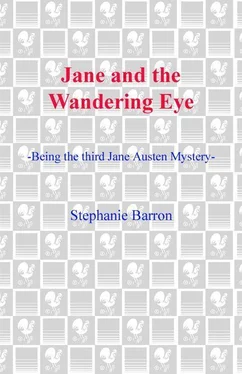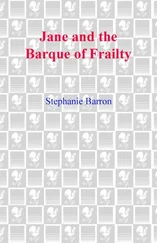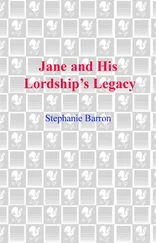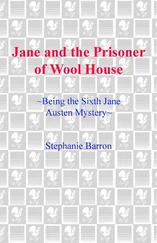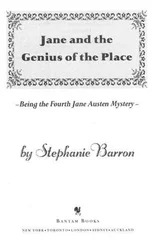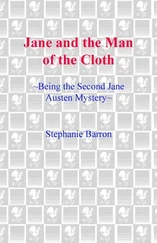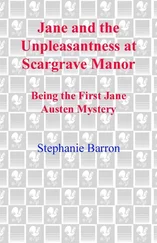He sighed, and reached for my cup of tea. “This is hardly Christmas cheer, my dear. I shall fetch you some claret.”
“My lord—”
He turned, and lifted an eyebrow.
“You must learn to endure it. As I have learned to endure Madam’s death,” I said softly.
“I shall, Jane. I shall — as the hangman submits to his calling; with revulsion, and anxiety, until the grave is filled. It is a dreadful presumption to serve in judgement on one’s fellow men. It is to play a little at God — and though I have been accused of such a score of times before, I only now admit to approaching it.”
“When justice is done, you may sleep in peace.”
“Yes.” He hesitated. “And until then, I believe I shall go away for a time.”
I knew better than to enquire his direction.
THE HOUR OF MIDNIGHT STRUCK; LADY DESDEMONA THREW wide the drawing-room casements, and looked down into the street below. “Look, Grandmère! The Waits are come!” Her glowing face turned affectionately to Lord Kinsfell. “How happy I am, dear Kinny, that you are with us to hear them sing!”
The Dowager cried out to Jenkins to conduct the Waits hither; and they very soon assembled before the drawing-room fire, cheeks flushed and eyes bright with cold. They were a rag-tag group of common folk, dressed for warmth rather than style, some of them no more than children — but the sound of their singing, when once they commenced, had the power to lift the heart. The very soul of Old England, rife with Yule logs and roasting mutton, good fellowship and love. I thought of Anne Lefroy, divided forever from her comfortable hearth, the table surrounded by children, and shivered with a sudden chill.
God rest ye merry, gentlemen, let nothing ye dismay …
I lifted my voice, and sang aloud with the rest.
In Austen’s day, it was the custom to travel about the streets of Bath and other major cities in hired sedan chairs carried by a man fore and aft. — Editor’s note.
Eliza de Feuillide was both Jane Austen’s cousin and the wife of her brother Henry, but Jane usually refers to Eliza simply as her sister. It was a convention of the time to address relatives acquired through marriage in the same manner as blood relations. — Editor’s note.
Sarah Siddons (1755–1831) was the foremost tragic actress of Austen’s day. With her brother, John Philip Kemble, Siddons dominated the London stage at this time, where it is probable Jane had seen her perform. — Editor’s note.
Robert Adam’s renovation of Old Drury Lane Theatre in 1775 featured pale green and pink paint with bronze detailing — which the Dowager Duchess apparently emulated. Old Drury was pulled down and replaced by a newer building in 1794. This building burned to the ground in 1809. — Editor’s note.
This was the original Bath theater on Orchard Street, where Jane was a frequent patron. Its company divided performances between Bath and Bristol, playing houses in each city on alternate nights — Tuesday, Thursday, and Saturday in Bath; Monday, Wednesday, and Friday in Bristol. — Editor’s note.
Elizabeth Farren was a member of the Drury Lane company during the 1780s and the recognized mistress of the Earl of Derby, who made her his second countess at his first wife’s death in 1797. — Editor’s note.
James Gillray (1757–1815) was the foremost political caricaturist of Austen’s day. His satiric prints began to make their appearance in the 1780s. The aquatint engravings generally made sport of fashionable scandals or political missteps, much as do present-day political cartoons. — Editor’s note.
These were the government’s public funds, one of the few reliable investments in Austen’s day, which generally yielded annuities of four percent per annum. — Editor’s note.
Richard Brinsley Sheridan, the noted Georgian playwright of The School for Scandal and owner of the Drury Lane Theatre, was also a member of Parliament. Sheridan first came to Jane’s notice in 1787, when he made a four-day speech against her family’s friend Warren Hastings, the former Governor-General of Bengal, during Hastings’s seven-year parliamentary trial for impeachment. — Editor’s note.
The Pump Room was one of the social centers of Bath. It adjoined the King’s Baths, near the Abbey and Colonnade in the heart of the city, and was frequented by the fashionable every afternoon. There they would congregate to drink a glass of medicinal spring water presented by liveried pump attendants; to promenade among their acquaintance; and to peruse the calf-bound volume in which recent arrivals to the city inscribed their names and local addresses. Austen describes the Pump Room to perfection in Northanger Abbey , in which Catherine Morland and Isabella Thorpe make the place their second home. — Editor’s note.
Jane refers here to the events related in the first volume of her edited journals, Jane and the Unpleasantness at Scargrave Manor (New York: Bantam Books, 1996). — Editor’s note.
John Philip and Charles Kemble both attended a Roman Catholic college in Douay, Flanders. Their father was Catholic, their mother Protestant, and according to custom the sons were reared in their father’s faith while Sarah Siddons was raised in her mother’s. — Editor’s note.
To be “disguised” in Austen’s day was to be quite thoroughly drunk. — Editor’s note.
The Vyne, in Sherborne St. John, Hampshire, was the ancestral home of the Chute family and their entailed heirs; Jane’s eldest brother, James Austen, was vicar of the parish from 1791, and frequently hunted with William-John Chute, master of the Vyne foxhounds. — Editor’s note.
This opened for the 1805 season, despite Portal’s death. — Editor’s note.
Sir William Reynolds, a former schoolmate of Austen’s father at Oxford, was the baffled justice last encountered in Jane and the Unpleasantness at Scargrave Manor. — Editor’s note.
Mantua-maker was the eighteenth-century term for dressmaker. Jane betrays her age by employing it here. It derives from the mantua, a loose style of gown common in the second half of the eighteenth century, made of silk from Mantua, Italy. — Editor’s note.
Wheelers is a term connoting the horses closest to the carriage wheels — in a team of four, the two harnessed first within the traces. — Editor’s note.
Eliza Austen was born Eliza Hancock, the daughter of Philadelphia Austen (the Reverend George Austen’s sister) and Tysoe Saul Hancock, a surgeon with the East India Company. While in India Philadelphia Hancock was rumored to have “abandoned herself to Mr. Hastings.” Warren Hastings, the Governor-General of Bengal from 1772 to 1785, served as Eliza’s godfather and placed 10,000 pounds in trust for her; Eliza later named her only son Hastings. It was commonly believed, though never acknowledged, that Eliza was Warren Hastings’s daughter. — Editor’s note.
Читать дальше
